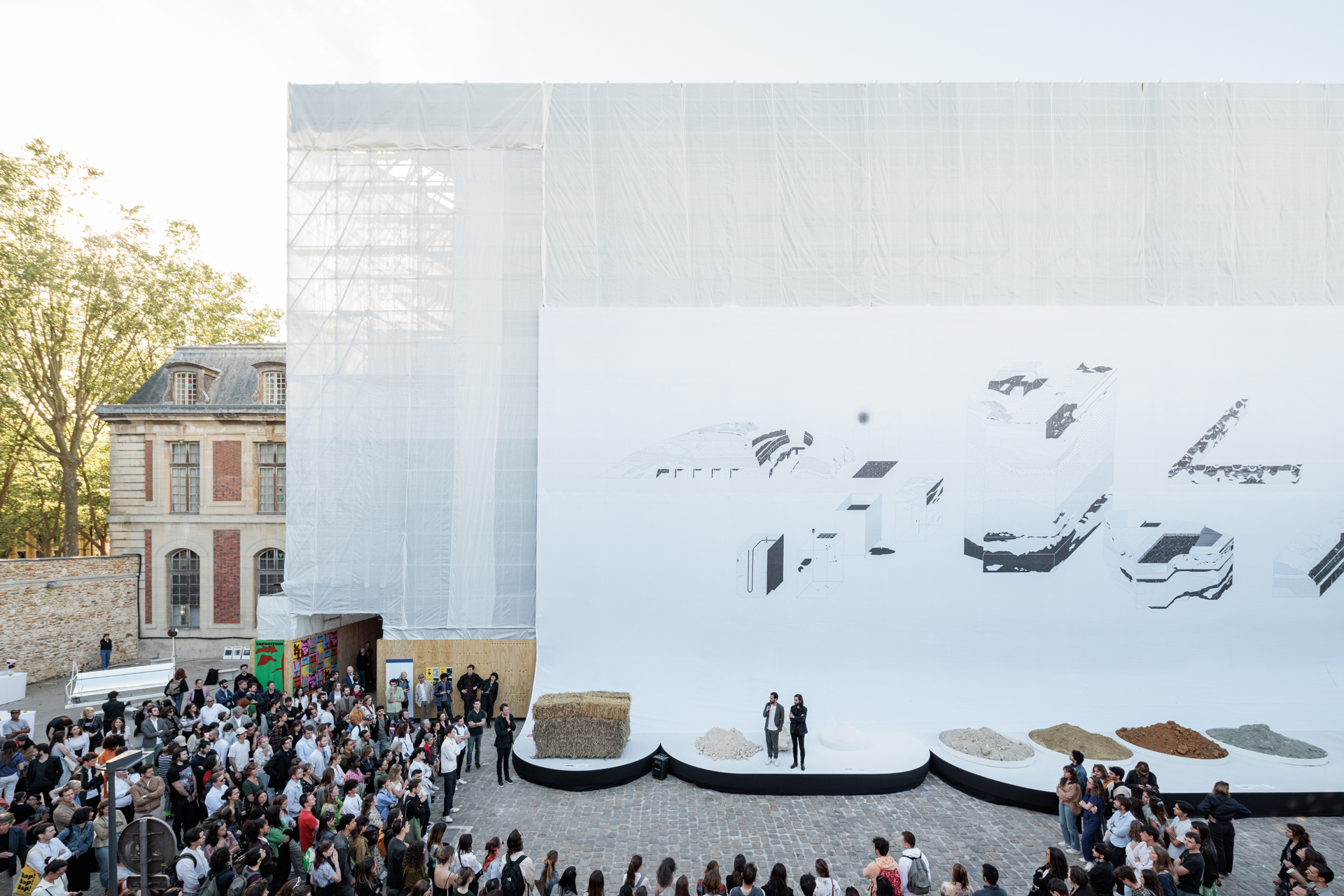
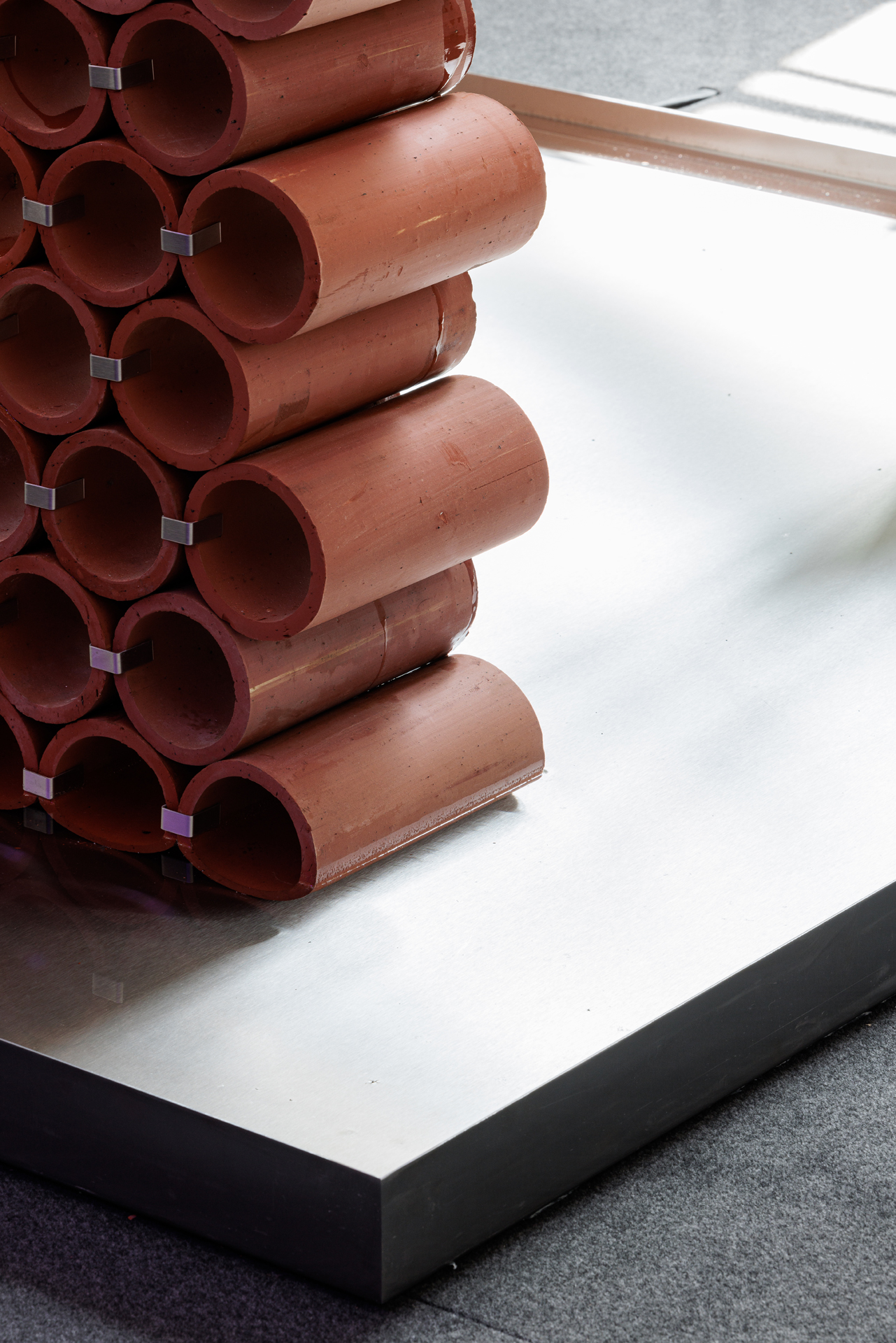
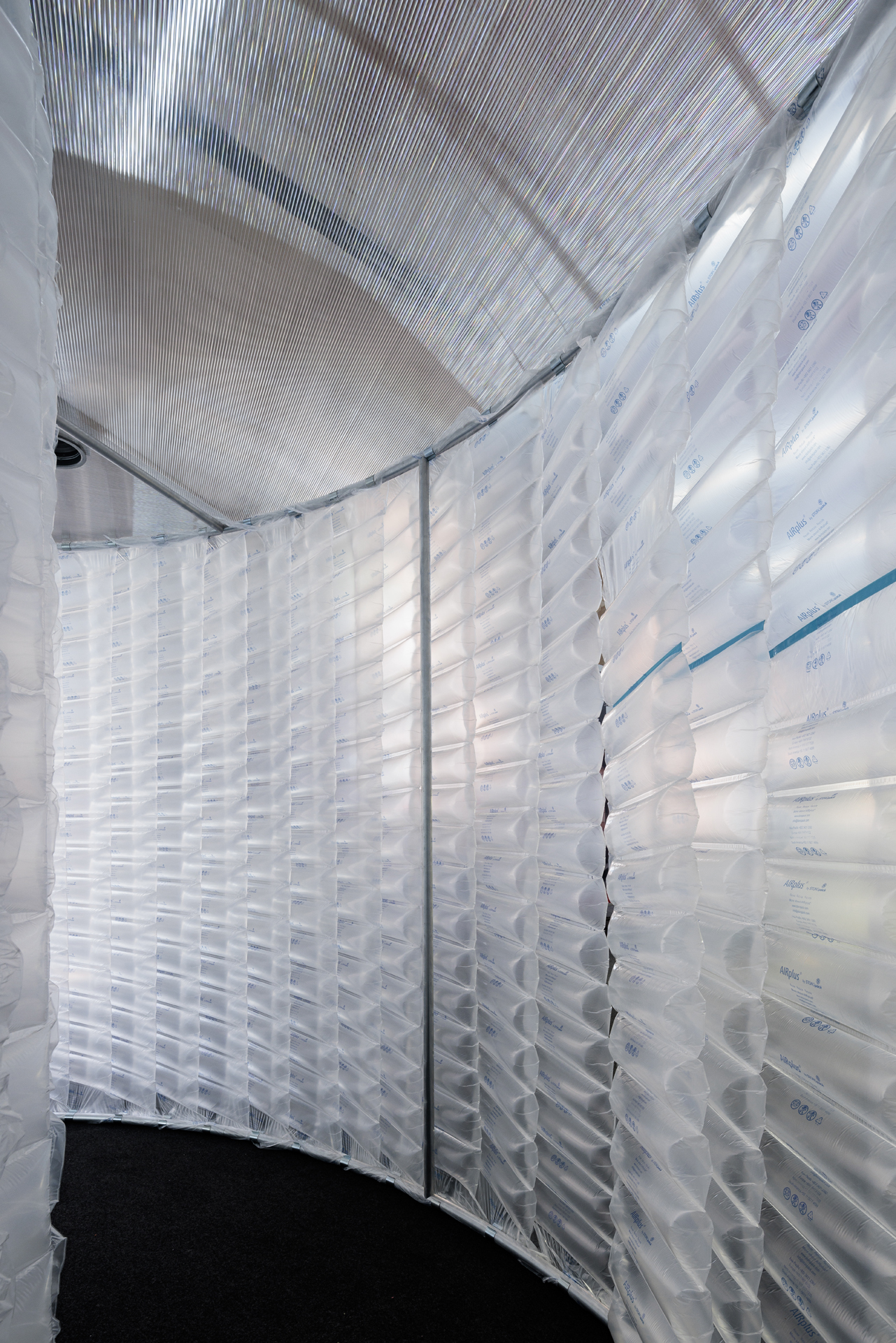
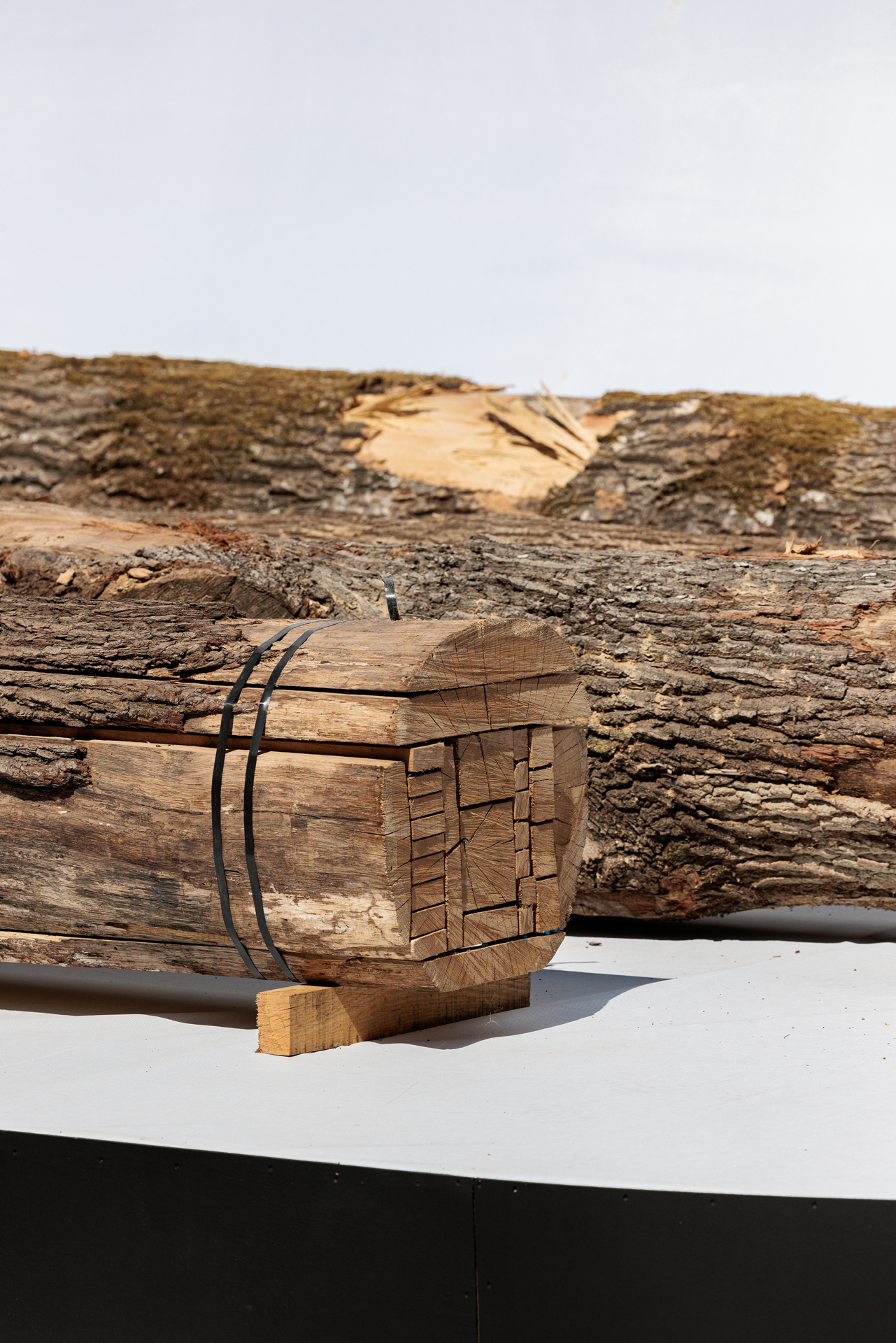
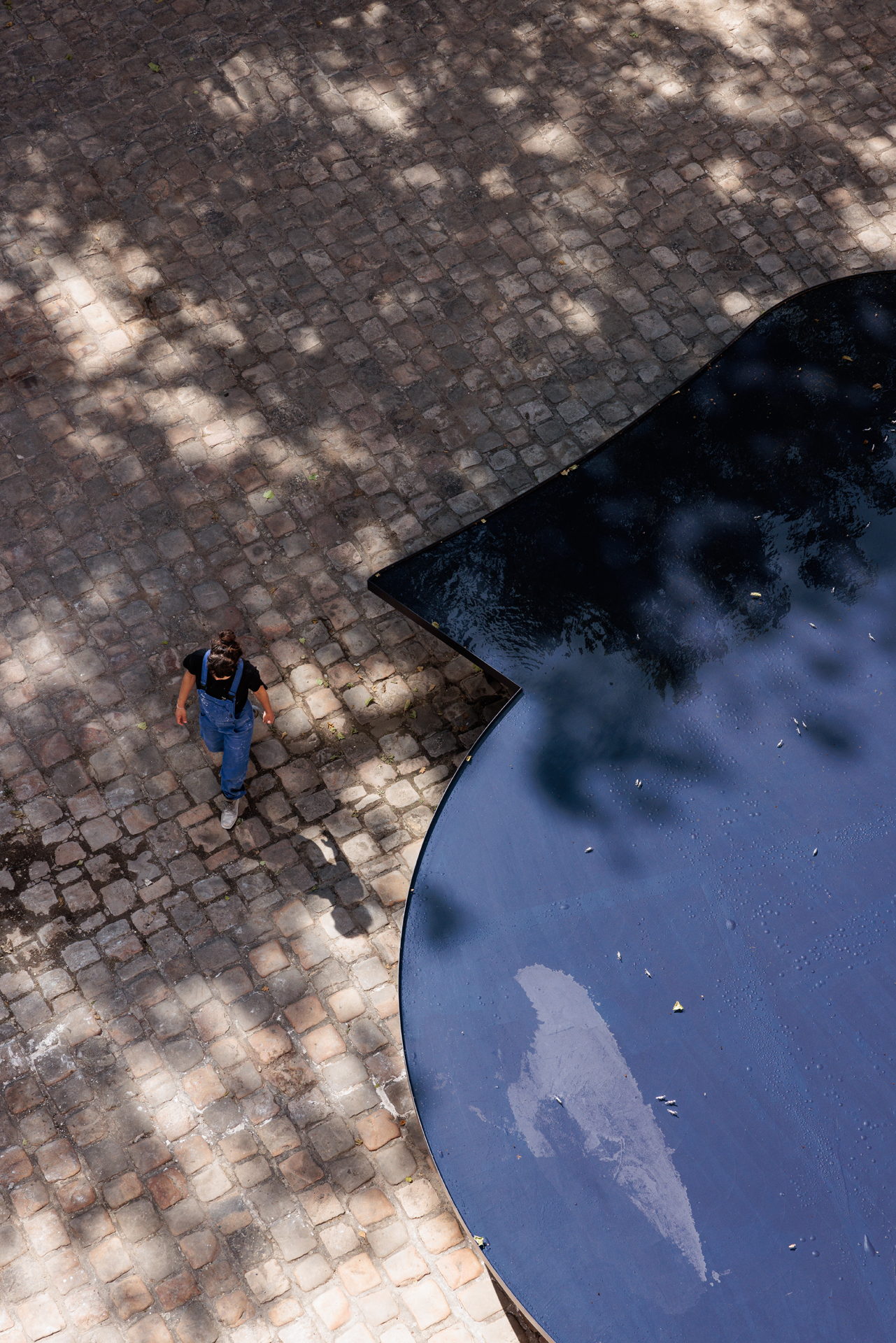
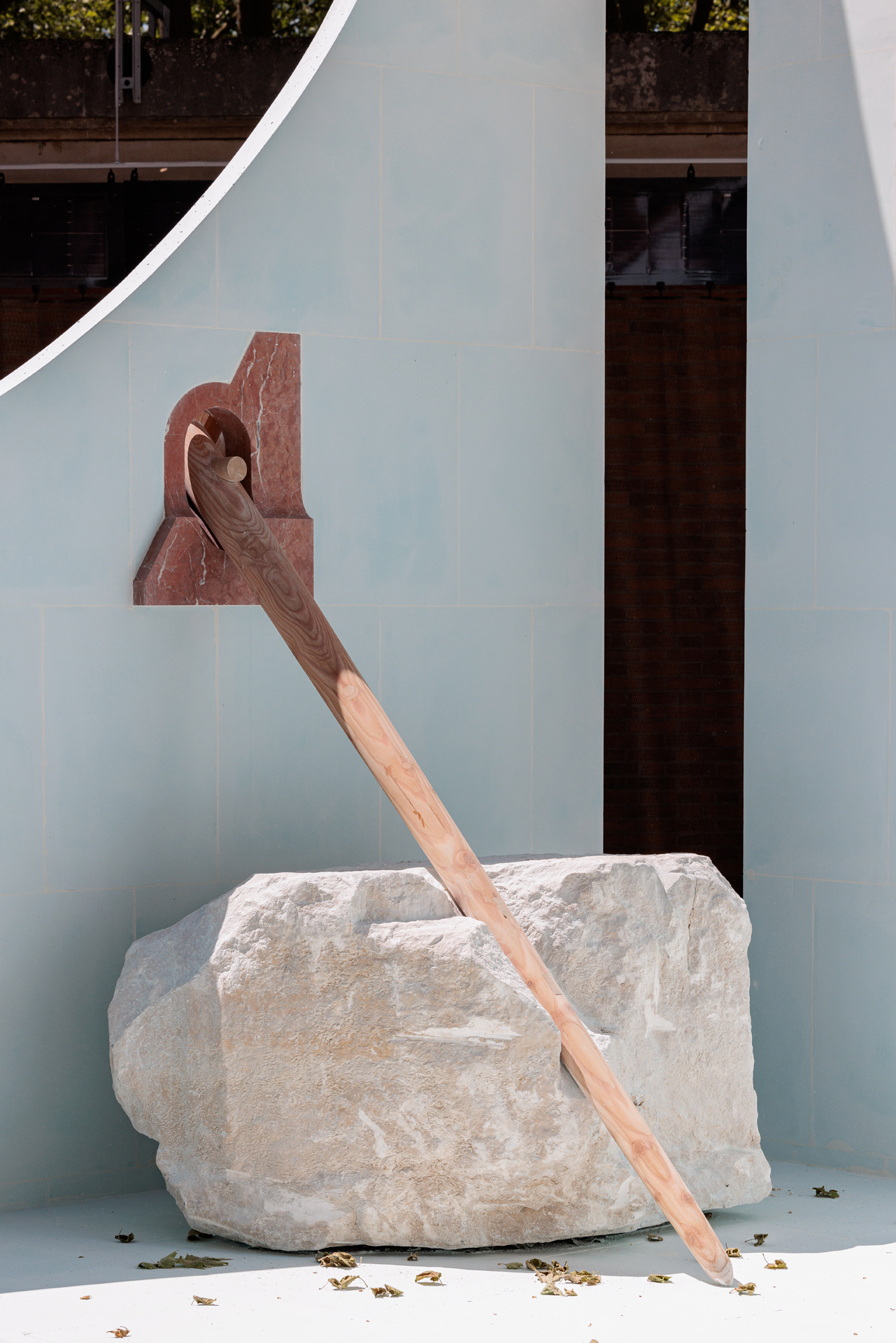
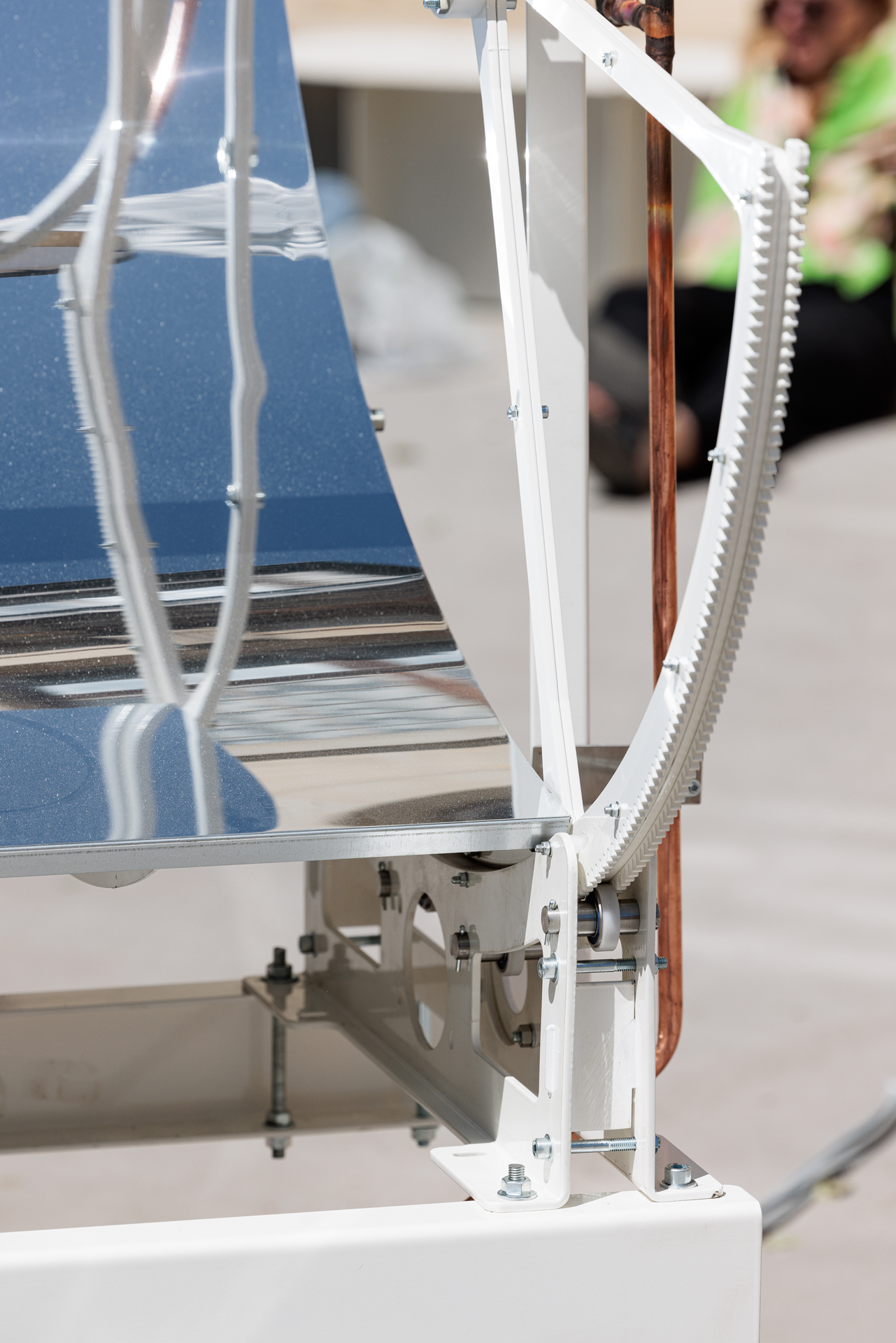
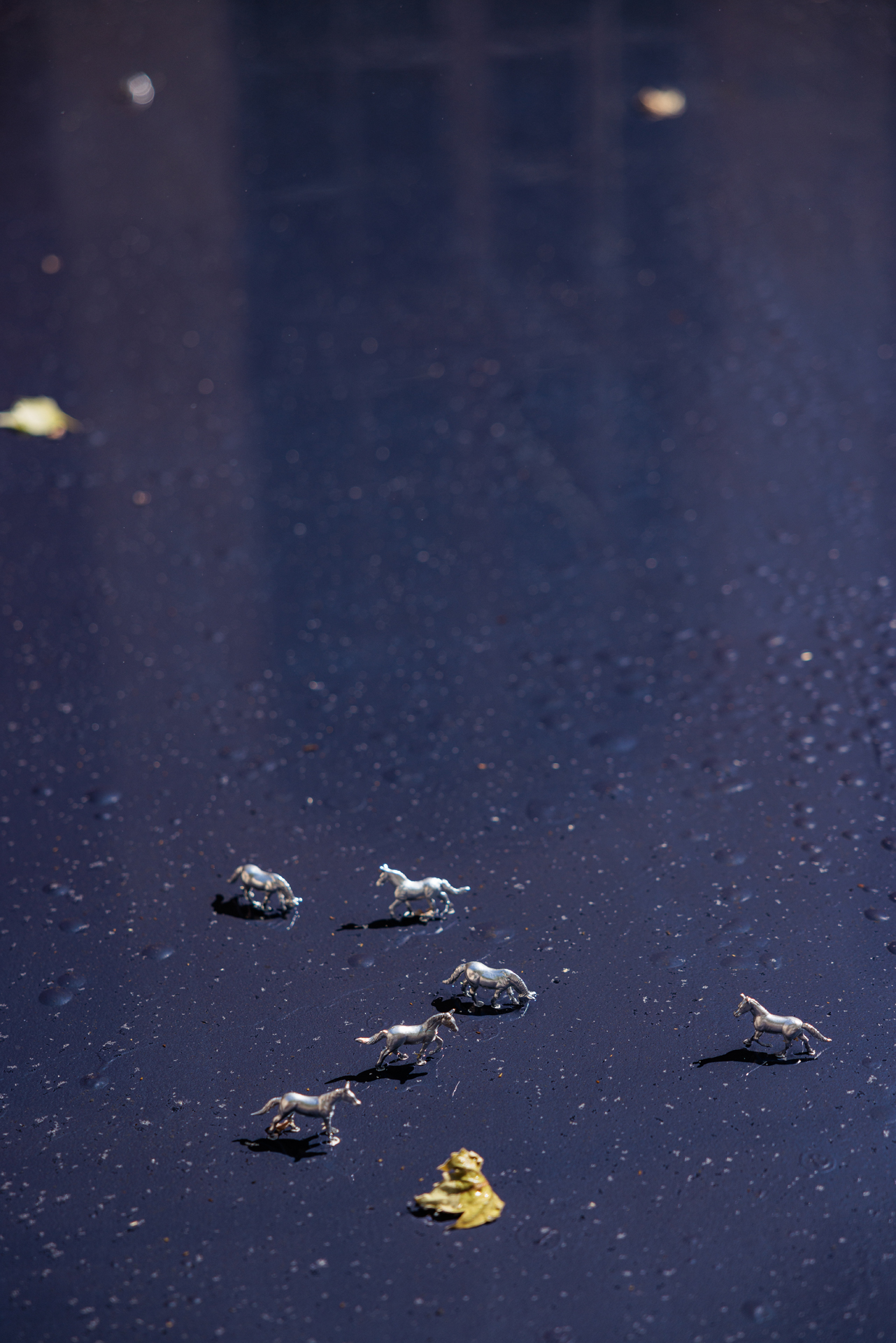
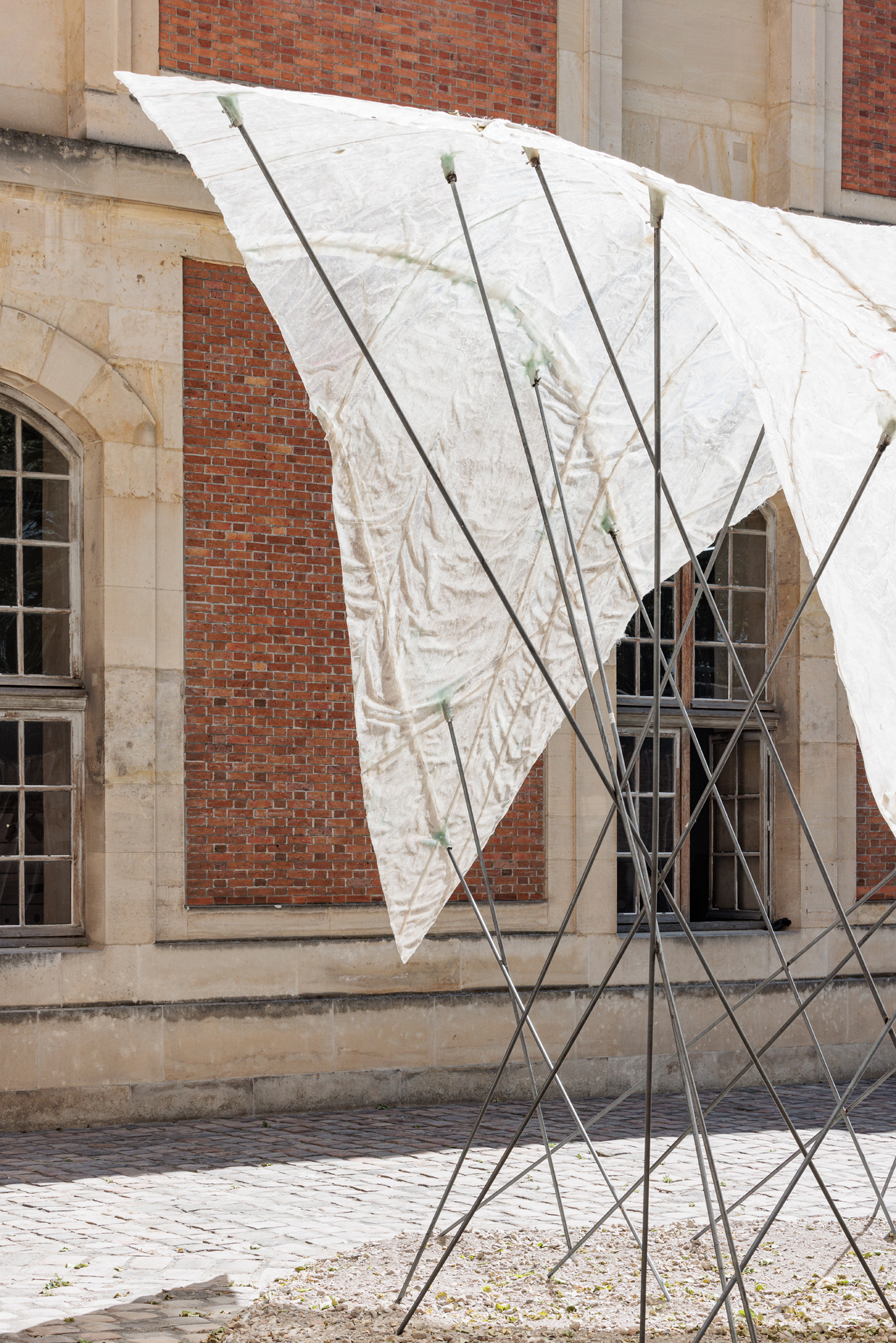
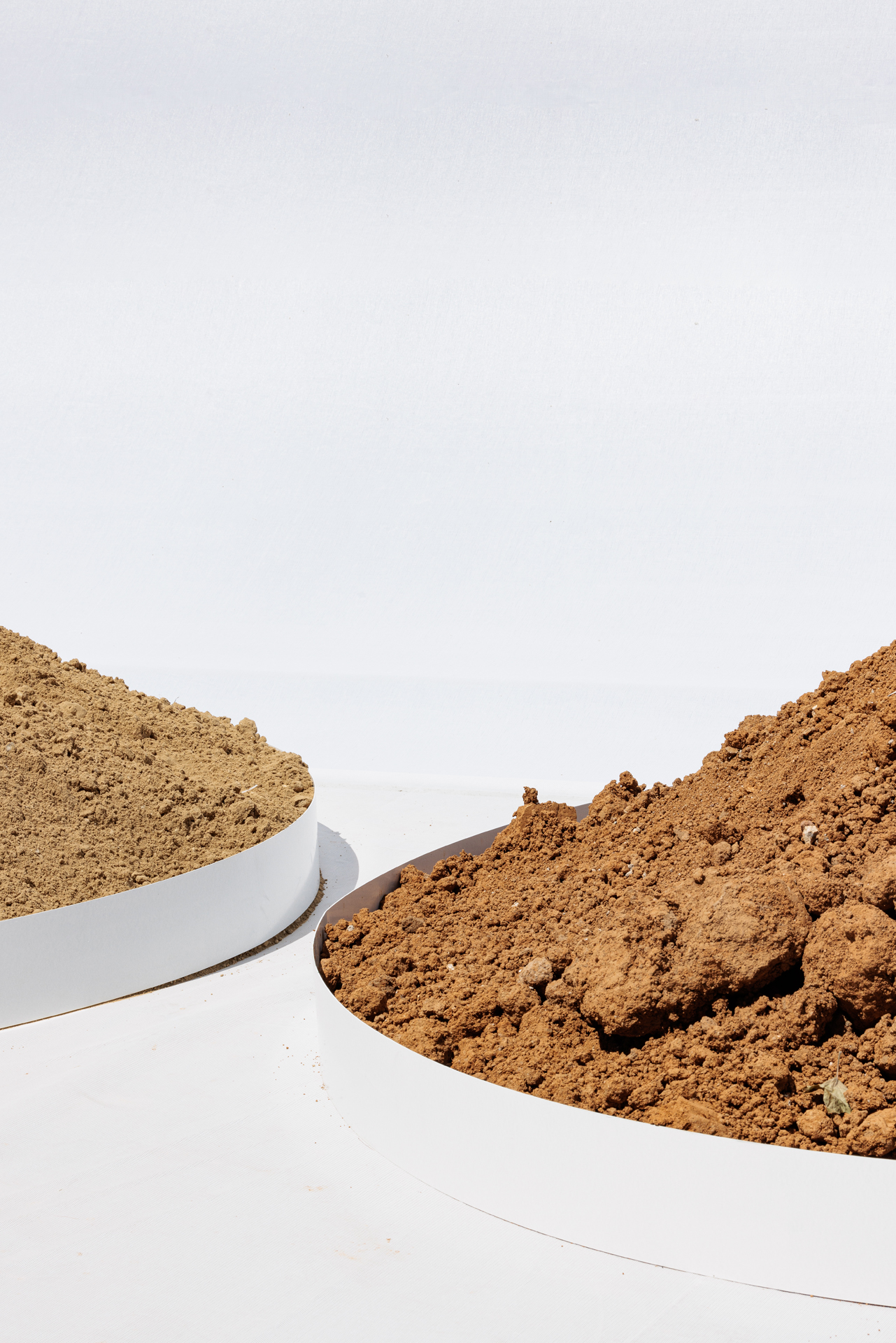
2nd biennale of landscape & architecture of Ile de France
ENSA-Versailles exhibition curated by Nicolas Dorval-Bory & Guillaume Ramillien
Team : Hugo Taillardat (NDBA), Sirine Ammour (GRA)
In the face of the ecological emergency, new architectures are emerging in the Île-de-France region, throughout the country and around the world. In order to invent them, their authors are questioning what is at the source of architecture by developing new languages that oscillate between visible and invisible architecture.
« The hut or the fire ? »
In 1969, the critic Reyner Banham defined architecture as a dual strategy linked to an environment, and illustrated it with the story of a tribe that would “arrive at night in a camp well supplied with timber”. To satisfy their homeothermic condition in the face of night, the potential of this wood can be exploited in two ways: building a shelter – the structural solution – or feeding a fire or a fireplace – the energetic solution.
Half a century later, and in the face of environmental challenges, the exhibition Visible, invisible questions the contemporary architectural forms that can emerge from this rediscovery of material and energy rationality.
The ÉNSA Versailles, located on the exceptional site of the Petite Écurie, hosts the Visible Invisible exhibition, which is structured in three parts:
– a Monumenta, which inventories the material and energy resources of the Region.
– an exhibition of the new practices of more than 40 local and international architects exhibited in the Nef. Major installations produced by Baukunst, Ensamble, LCLA and Mary Duggan, as well as the artist Simon Boudvin, will be exhibited in the Cour des Fontaines.
– free workshops (on inscription) throughout the Biennale, during which the public itself will be invited to appropriate, manipulate and experiment with the resources alongside fascinating professionals.
The Sculpture and Moulding Gallery, an exceptional place that houses a unique collection of stone and gypsum statues and an eternal source of inspiration, will close the exhibition route.
If a terroir can be defined as the meeting of a soil, a climate and know-how, architecture is similarly the shaping, through a particular culture, of materials and inner climates, of visible and invisible resources.